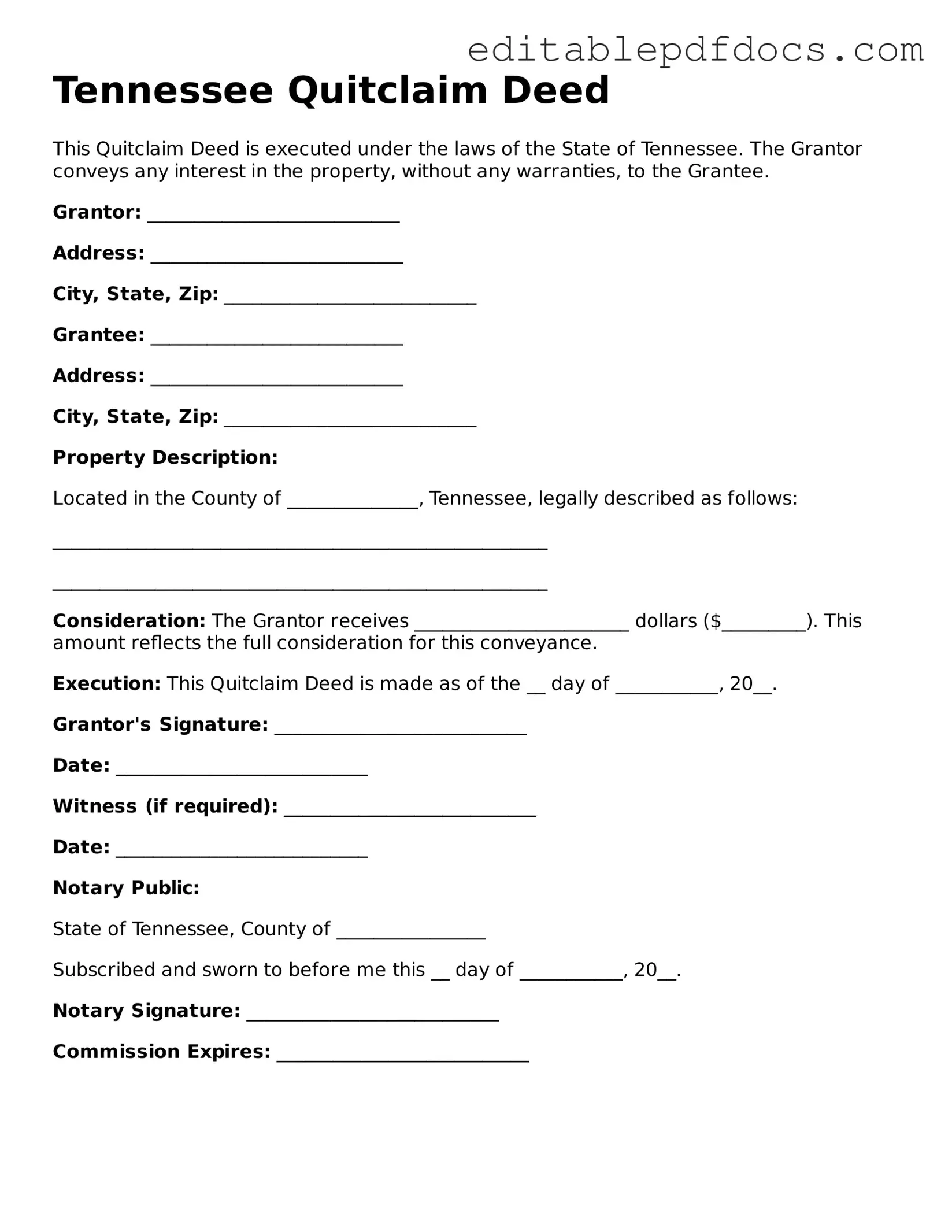Filling out a Tennessee Quitclaim Deed form can be a straightforward process, but mistakes can lead to complications in property transfer. One common error is failing to include all necessary parties involved in the transaction. Both the grantor (the person transferring the property) and the grantee (the person receiving the property) must be clearly identified. Omitting one of these parties can render the deed ineffective.
Another frequent mistake is neglecting to provide a legal description of the property. A vague or incomplete description can create confusion about what property is being transferred. It is essential to include the full and accurate legal description, which can typically be found in previous deeds or property tax records.
Many individuals also overlook the requirement for notarization. A Quitclaim Deed must be signed in the presence of a notary public to be legally valid. Without this step, the deed may not be recognized by the county register or other authorities, leading to potential disputes.
Incorrectly stating the date of the transaction is another pitfall. The date must reflect when the grantor signed the deed. A wrong date can complicate matters, especially if there are subsequent transactions or legal proceedings related to the property.
Failing to record the Quitclaim Deed with the appropriate county office is a critical mistake. Recording the deed protects the new owner's interest in the property and provides public notice of the transfer. If the deed is not recorded, the grantee may face challenges in proving ownership.
Another mistake involves not considering potential tax implications. Individuals may forget to consult with a tax advisor regarding any taxes that may arise from the transfer of property. Understanding these implications can help avoid unexpected financial burdens in the future.
Using outdated or incorrect forms can lead to errors as well. It is vital to ensure that the latest version of the Quitclaim Deed form is used. Using an old version may result in missing information or outdated requirements that could invalidate the deed.
Lastly, many people fail to keep copies of the completed deed for their records. Retaining a copy is important for future reference and can be crucial if any disputes arise regarding ownership or the terms of the transfer.
